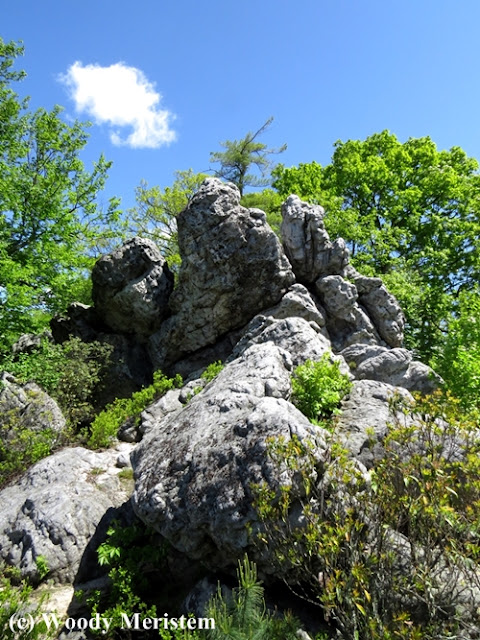It was about 10 o’clock in the evening when
my wife happened to notice it on the outside sill of our kitchen window. Responding
to her summons I looked out and there it was, right on the sill where the light
from the kitchen illuminated it somewhat.
The answer to the question of “How’d it get
here?” is fairly simple. Scaling the concrete foundation, and siding and making
its way around the sill’s overhang is fairly easy for a creature with suction
cups on each of its toes. Why was it there? The kitchen light we leave on in
the evening attracts the moths and other insects on which it feeds.
I went outside and easily caught our
visitor – the first gray tree frog we’ve seen here after 44 years. Since I
wanted some photos of the visitor, the frog was placed in a glass container we’ve
used a terrarium over the years where it would spend the night. It quickly
demonstrated its climbing ability by climbing part way up the glass side of the
container.
In the morning as soon as it was light
enough for photos we went outside, camera in my hand.
Gray tree frogs live up to the species
portion of their scientific name, versicolor,
since they can change their coloration to blend into the background. In the
morning, the frog appeared a somewhat Kermit-like green –
A little while later, after resting on the
grayish bark of a red maple, the frog gradually assumed a blotchy grayish color
–
With its lumpy-bumpy skin and varied color the
gray tree frog is almost perfectly camouflaged against tree bark.
Gray tree frogs, except during winter and the short time when they descend to breed in standing water, spend their time high in the tops of
trees. There, they quietly pass the day on a branch and spend the night feeding on insects – especially moths. Their camouflage protects them
from predators, but if a predator threatens the bright yellow coloration of
their inner legs distracts the threat as they leap to safety.
Although gray tree frogs are reputed to
make good pets, our visitor was released to resume its life in the treetops.































